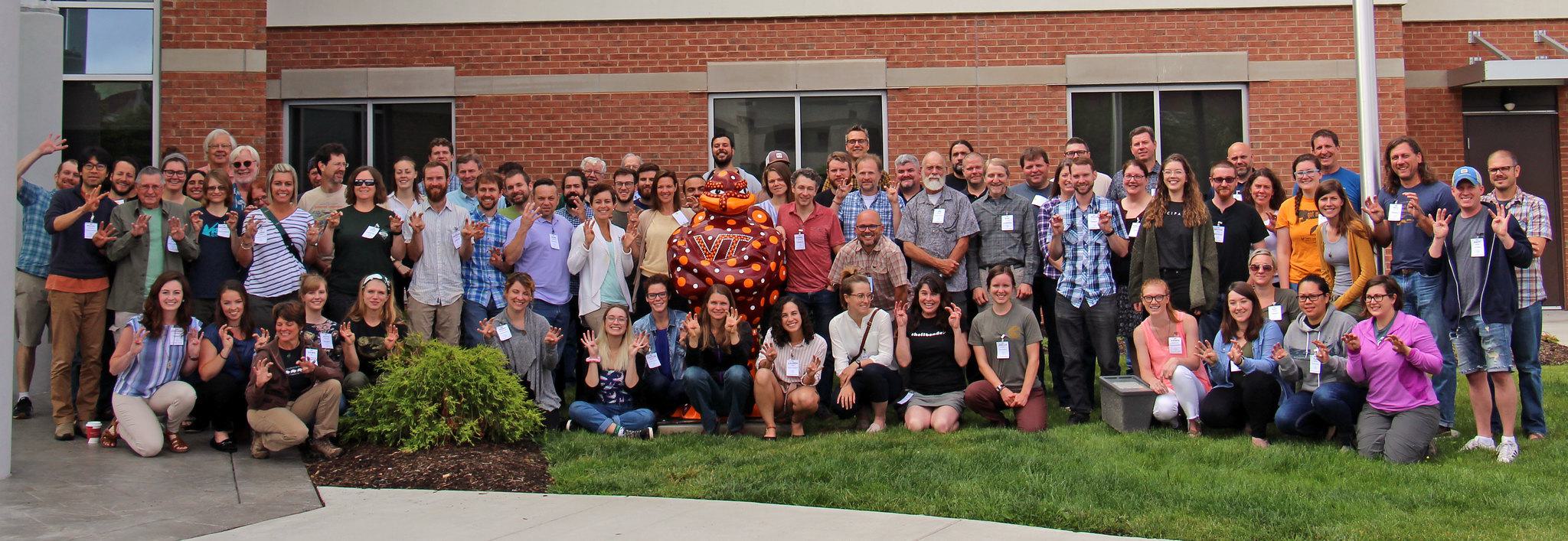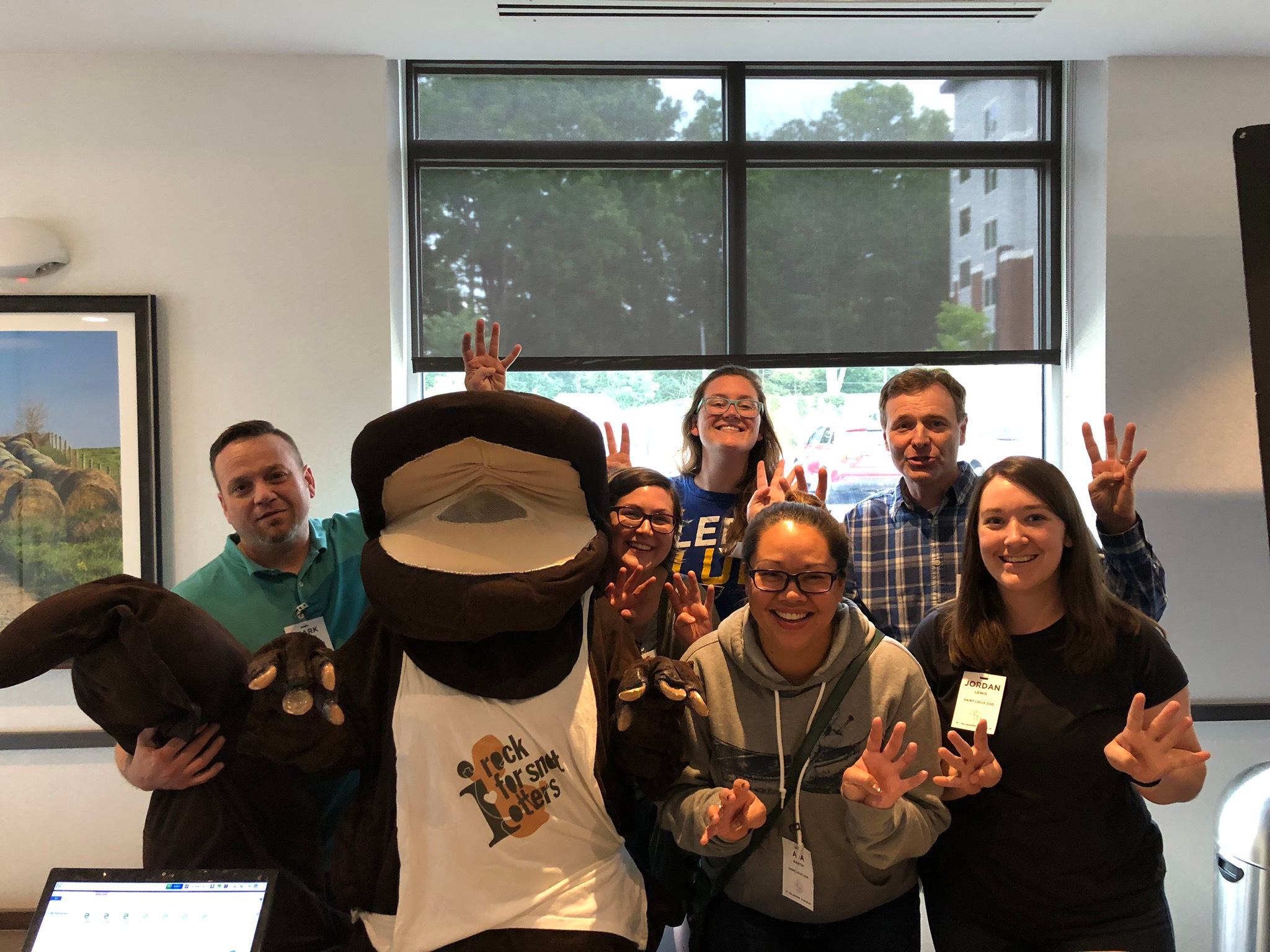Before the mayhem of releases, I traveled with my fellow hellbender keepers— Aja Martin, Patty Ihrig-Bueckendorf and Jordan Lewis—to Blacksburg, Virginia, to attend the 2019 Hellbender Symposium.
None of us had ever been to Virginia. If you Google "Virginia," you will quickly find that the state beverage is milk, and the state dance is square dancing. A thrilling adventure surely awaited us! I was apprehensive of the 10-hour drive between St. Louis and Blacksburg; however, I absolutely adore rodents, so the highlight of the drive was the groundhogs!
Upon arriving, we checked into our rooms and picked up our registration packets. The festivities began that night with a keynote presentation by Dr. Thomas K. Pauley, Professor Emeritus of Biological Sciences at Marshall University. He dazzled us with stories of "herping" in West Virginia and made it abundantly clear that West Virginia is not a part of Virginia.
For the next three days, there were opportunities to attend meetings, discussions, and talks that relate to our job duties and assignments. There was a mix of attendees (including international colleagues) from a range of academic institutions, state agencies, federal agencies, and zoological institutions. Everyone came together in order to share their hellbender passion and knowledge. This opportunity did not go unappreciated. I feel that it was imperative for us to attend the symposium in order to acquire the most up-to-date information on hellbender research, fieldwork, and captive rearing procedures/protocols. Being able to represent the Saint Louis Zoo and the Ron Goellner Center for Hellbender Conservation was an honor.
There were two talks that were very memorable to me. Stephanie Morrison, a Missouri State University graduate student, discussed her behavioral analysis of electrofishing on hellbenders. All of us (Aja, Patty, Jordan and I) had worked with Stephanie and the Missouri Department of Conservation to collect data for her research. Unfortunately, there were technical errors and glitches that made the projector turn to black and pause throughout her whole talk, but she continued on. She actually ended up winning the Best Graduate Student Platform Presentation Award despite the glitches.
Another of my favorite presentations was by Dr. Sumio Okada, a biologist at the Hanzaki Research Institute of Japan. He shared his research regarding Japanese giant salamanders, Andrias japonicas, using slopes to bypass dams in western Japan. There are small dams in some Japanese rivers to control flooding, and these dams can affect salamander movement. We actually got to watch some video footage from the Kando River; Japanese giant salamanders were using the little stairs to bypass the dam. Sumio's energy, passion and entertaining graphics made his talk very engaging and memorable.
At one point during the drive there, I was asked, "What is your favorite thing?" I quickly replied, "sustainability." I think the person who asked was looking for something more tangible and silly, like donuts or kittens. However, sustainability is an essential issue that I do value immensely. I try to make ecologically conscientious decisions daily and weigh the environmental impacts of my actions. Some examples include using plastic-free toiletries and cycling to work as often as I can. I only cook with local pasture-raised meat, and I am a member of a Local Community Sustainable Agriculture Farm Share (shout-out to Rosy Buck Farm.)
Unlike previous symposiums, there was an obvious theme of sustainability at this year's event. I substantially appreciated this. We received reusable aluminum cups and reusable name clips that we used for the whole symposium, and we even ate at Rising Silo Brewery, which is committed to sustainable practices. Not only is Rising Silo a brewery, but it is also a farm. Everything that we ate for dinner was harvested from their grounds. As I walked around stroking dogs, stalking chickens and admiring bees, I could hear a couple Eastern spadefoot toads, Scaphiopus holbrookii, calling in the distance. This was my absolute favorite moment of the symposium.
I count myself lucky to be so intrinsically involved with such a successful conservation program. On the last day, I raised my cup along the New River, "Here's to hellbenders, sustainability and for hellbenders being sustainable!"




